How Calico Wallpaper Has Transformed Home Decor Into High Art
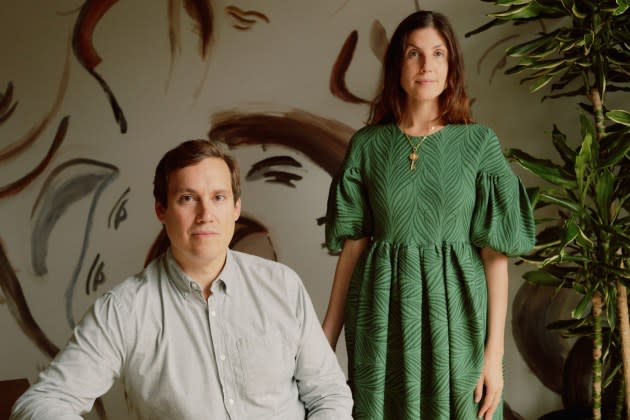
Wallpaper does not fare well in literature. Oscar Wilde, dying of meningitis in a dingy hotel room in Paris’ Latin Quarter, cursed the revolting paper on the walls. “My wallpaper and I are fighting a duel to the death…,” he is said to have written. In Elizabeth Perkins Gilman’s 1892 short story “The Yellow Wallpaper,” the female narrator, suffering from what her physician husband describes as “a temporary nervous depression,” is confined to a room in their home with peeling yellow wallpaper. In her hallucinatory descent into madness, she imagines that she’s become trapped behind the wallpaper.
Both of them could have benefited from therapy — and much nicer wallpaper.
More from WWD
Rachel and Nick Cope — she an artist and art therapist, he a builder and former contractor who has hung his share of wallpaper — are intimately acquainted with the restorative potential, on rooms and moods, of well-designed wallpaper.
Their New York-based wallpaper company Calico Wallpaper — which they birthed 10 years ago in the eerie days after Hurricane Sandy barreled through New York City, flooding streets and knocking out power — specializes in bespoke non-repeating murals, rather than the rote stripe and scrolling of yore. Their collections transform home decor into high art and interiors into immersive art installations in ways that are far more encompassing than simply hanging a canvas on a wall or putting a sculpture on a shelf.
“Creating an immersive space, transforming someone’s home to change how they feel, playing with color — it bridges all of these fields of interest that I always had,” says Rachel, 42.
With an almost obsessive attention to detail and quality, Calico Wallpaper has become a staple at design fairs, show houses, five-star hotels and monied residences worldwide. Its work has been featured at Milan’s famed Roassana Orlandi Gallery, London Design Festival and Salone del Mobile. Last spring as part of Milan Design Week, Calico’s collection was featured in the Boccie Apartment, Canadian designer Omer Arbel’s new permanent space in the chic Zona Magenta neighborhood.
It has amassed a slew of celebrity fans (Chrissy Teigen and John Legend, Oscar-winning filmmakers Elizabeth Chai Vasarhelyi and Jimmy Chin, Neil Patrick Harris and David Burtka) and a growing body of work that includes notable collaborations with designers and artists including Faye Toogood, Cody Hoyt, Matthew Day Jackson, Daniel Arsham and Chris Wolston.
As it marks 10 years, Calico is fittingly rereleasing its three of their first collections — Wabi, Lunaris and Night — each in two new colorways.
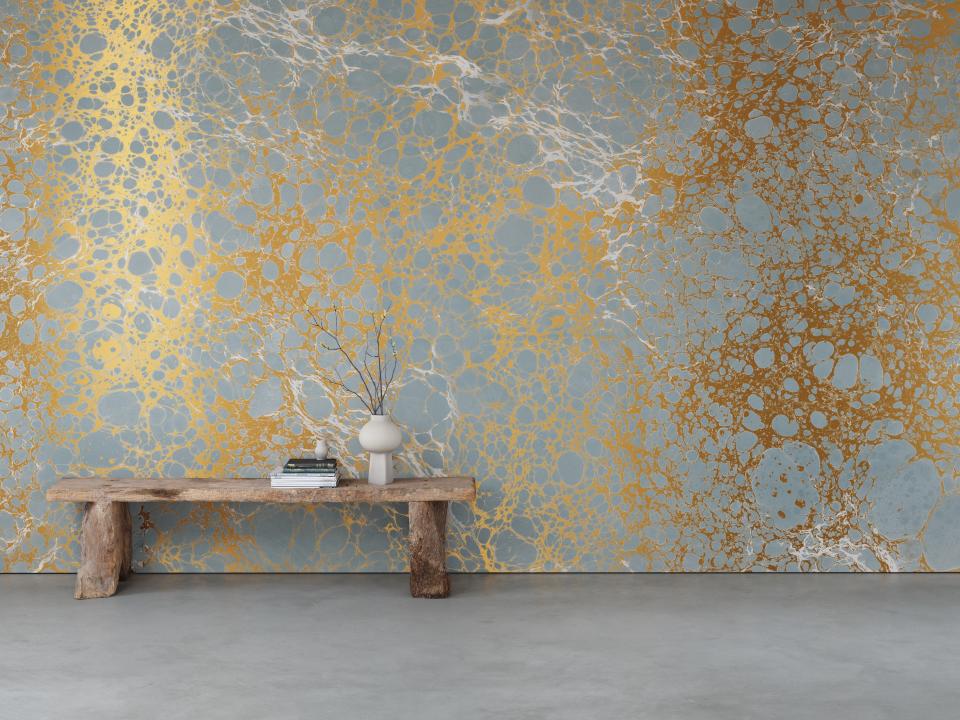
The Wabi collection encapsulates its origin story. Rachel, a sculptor and painter who studied art therapy at the School of Visual Arts, had always wanted to collaborate with her husband on a project.
“The Venn diagram of our overlapping skills and talents is pretty small,” says Nick, 41.
In 2012, Rachel was on a paid leave from her job as an art therapist at NYU Medical Center, which was forced to close after Hurricane Sandy knocked out power in Lower Manhattan. Nick’s design-build projects were all put on hold. The couple, who had a home studio in their loft apartment in the Red Hook neighborhood of Brooklyn, found themselves at home with time on their hands.
Although the ground floor of their apartment building, which then housed a Fairway Market, had filled with five feet of water, they were dry. Serendipitously, a few weeks before the storm made landfall, Nick brought home several sheets of marbleized paper that he found at a curiosity shop on the Lower East Side. He showed them to Rachel with the idea of creating a large custom wall mural.
“I started experimenting with a Turkish marbling technique,” says Rachel, who first learned paper marbling from her mother, a textile artist. “I became very quickly obsessed with it. I love the process. I loved seeing the paint moving on the surface of the bath. I made hundreds of different tests using paints that I had in the house. And then Nick started to scan them and Photoshop them.
“We were still young. We didn’t have kids. We were kind of isolated in Red Hook,” she continues. “And instead of just hanging out, we felt like this is it. This is the moment, let’s do this. I just remember being so thrilled that I could make artwork that Nick could transform into a product.”
A few months later, the collection was included in Architectural Digest’s annual home show, winning fans among New York City’s coterie of artists and designers. (At the time, they had hastily named their nascent brand after their cat, Irie, a Persian calico.)
The couple quickly outgrew the Red Hook space; they have an eight-year-old daughter Willow, and five-year-old son, River, and now make their home in Hudson, N.Y. During a Zoom interview, Irie lounges on a chair behind Nick, whose home office walls are papered with Woodlands, an abstract forest panorama that is part of Calico’s 2017 collaboration with British designer Toogood.
These collaborations have not only become Calico’s signature, they also illustrate the Copes’ dedication to innovation and continually pushing creative boundaries.
“Each collection is different and so there is always some degree of problem solving,” says Nick.
For one of their earliest collaborations, Inverted Spaces, with Boaz Cohen and Sayaka Yamamoto of Dutch art and design studio BCXSY, they used NASA satellite imagery — which is a public resource available to U.S. citizens — to create a series of abstract constellation portraits. The two couples met in 2013 at Design Miami; the following summer the Copes traveled to Amsterdam to discuss a collaboration. Over dinner they settled on using photographs from the Hubble Telescope.
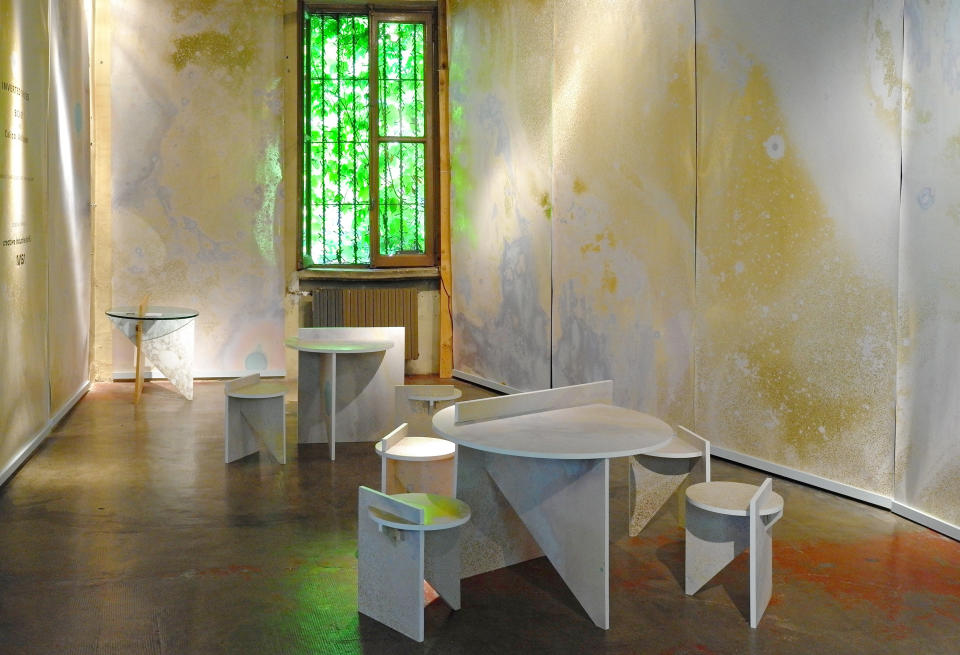
“We knew their work,” says Cohen, “but we didn’t know much about wallpaper other than it comes in rolls that you buy in a home center. But learning about this idea of non-repeating wallpaper and their approach was very inspiring for us. So when Sayaka and I thought about a large image, we were thinking about space.”
Doodling with the images in Photoshop, Cohen inverted them. “And the effect on the space images was just amazing,” he says. “It suddenly became so different and unrecognizable and interesting at the same time.”
“Now we tend to work more virtually,” says Rachel, “but at that time we actually traveled to meet them in their home and they shared a concept with us over dinner. I loved working very closely with Sayaka, especially on color. We would send different palettes to each other back and forth. It was very hands on.”
Because the images from the Hubble Telescope are not high resolution enough to be recreated on the scale that they needed, the Copes contracted with a Germany-based matte-painting studio, which has recreated sweeping vistas and towering castles for “Game of Thrones,” to digitally recreate the NASA images in a very high resolution.
“I think the biggest image they had was 100 megabytes and we print Gigabit files,” Nick says. “We had to expand all of them.”
The six-pattern collection is still among Calico’s bestselling wall coverings.
The Toogood collection began as a large collage printed on paper by Toogood and her team. It required a significant amount of testing on different materials — it’s printed on paperbacked linen material — but the image was already large enough to scale.
Calico’s recent collaboration with ceramicist Cody Hoyt presented a completely new challenge. Most of Hoyt’s work is slab-based hand-built ceramics, inspired by the Japanese art of Nerikomi. He then bends the colored slabs to create vessels. So the work, while it features flowers and grass and leaves, has a distinct geometric quality. As the inlaid clay is fired, cracks and tiny fissures emerge. The goal for the Calico collection, called Botanica, was to reproduce this clay fired texture, rather than simply transferring Hoyt’s floral patterns onto paper.
So Hoyt created a series of ceramic discs — which he took to calling “pizzas” — in varying sizes and colors. Some are as big as a large pizza pie, others are as small as a dime.
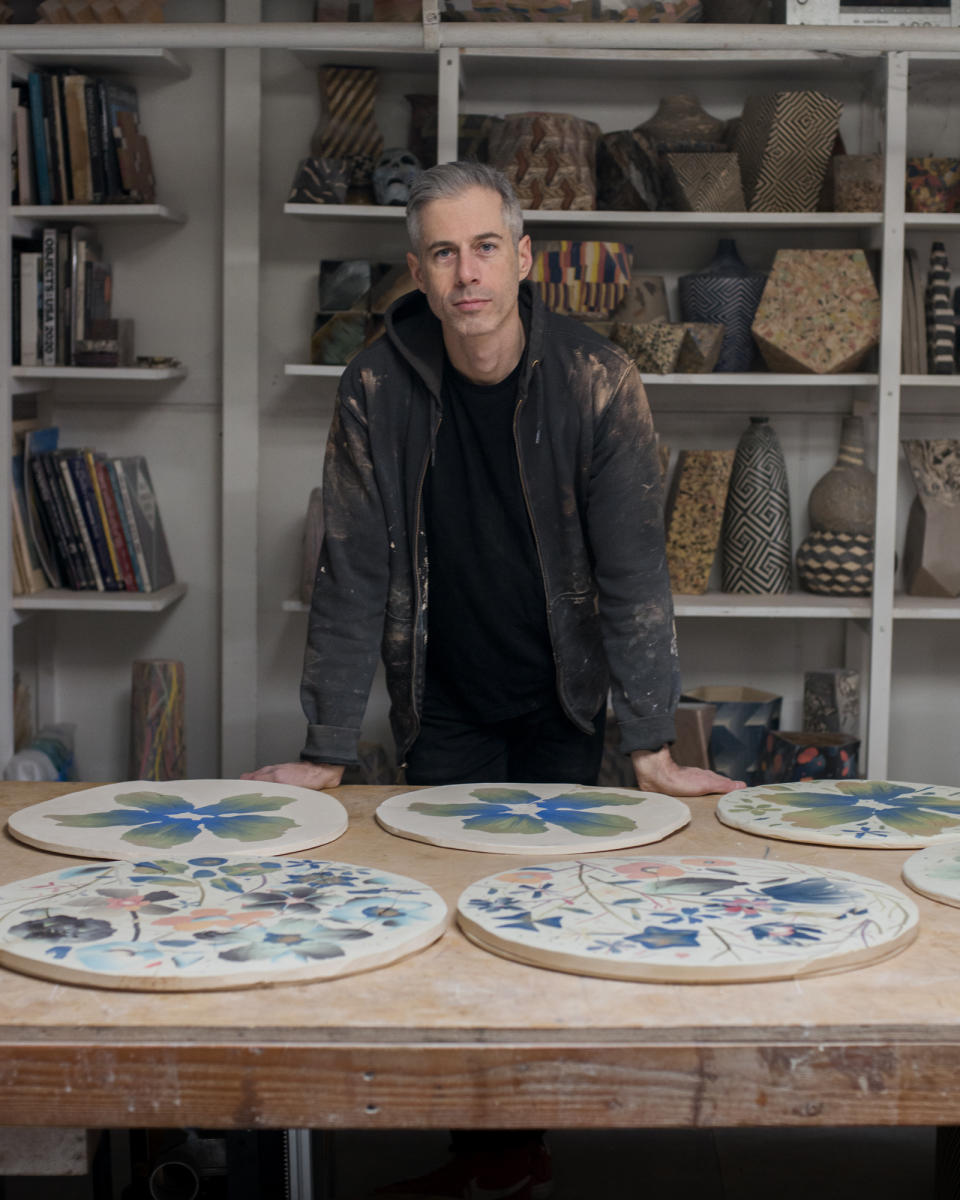
“We decided that these flat discs would be the best way to transfer my source material to their digitization process,” Hoyt explains. “So we created a bunch of these discs and covered them with all sorts of varieties of colors and shapes, flowers and leaves and ephemera and then [photographed] them, edge to edge. When they were all in the computer, we went back and composited, collaged, stuck them together. That part was the most fun for me. I usually do that with clay on my table, but they were able to do it on the computer. Admittedly, it was probably really daunting.”
Adds Rachel: “It was quite a challenge to create a mural digitally in the size that we needed and with these incredibly intricate, some very small, ceramic pieces. But we wanted it to look as realistic as possible, like the surface of one of his sculptural vessels. That was really important to me.”
The entire collaboration — from the earliest discussions to the finished product — took about two years, Hoyt says.
“I love how this collection feels very true to our beginnings,” Rachel says. “It reminds me a bit of Wabi because of how the original process is so hands on, and also a kind of ancient craft technique.”
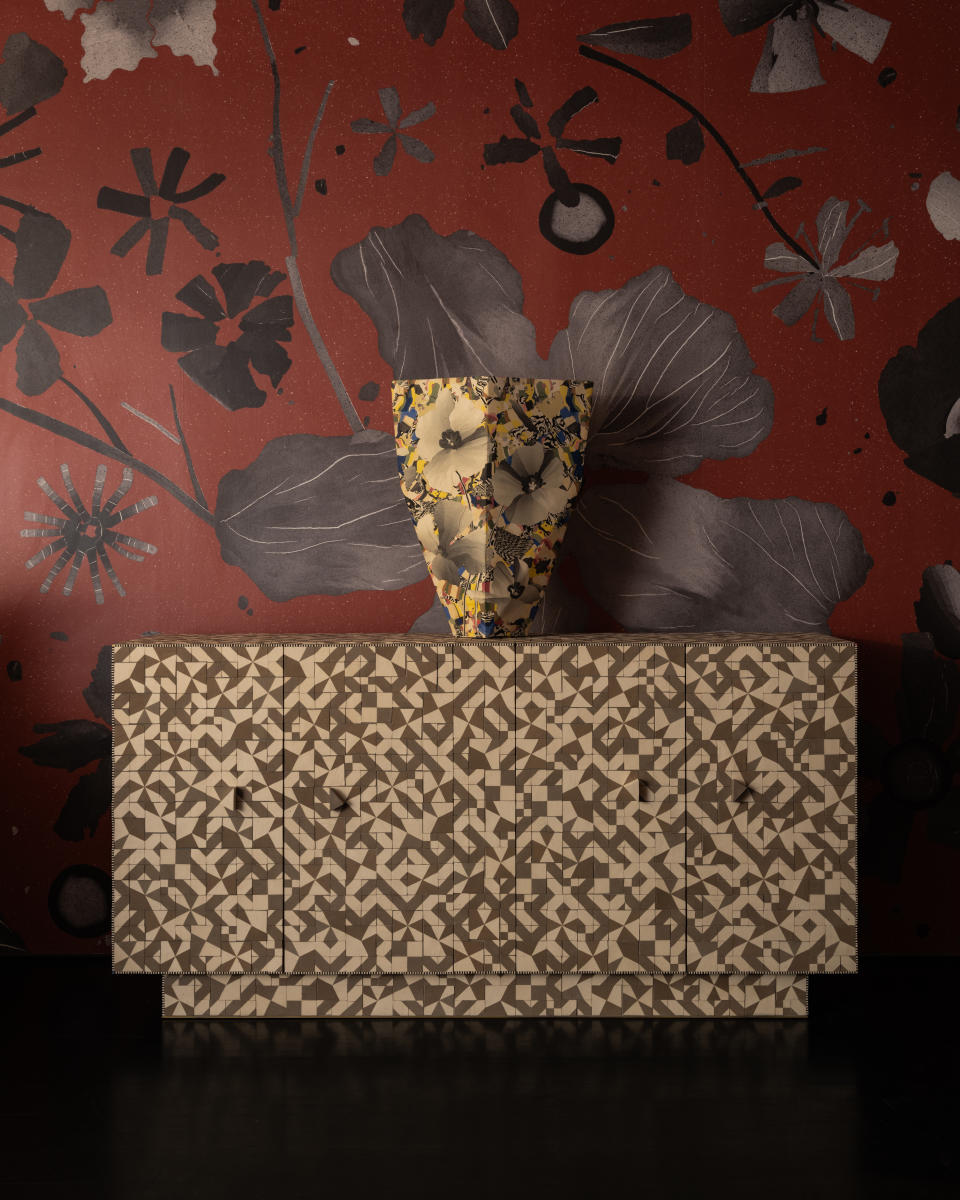
Calico has more than 50 collections, so far, most coming in six to eight colorways. Tapestry, its newest collection, was inspired by the mosaics of Gaudi. They are printed at three mills — in California, North Carolina and Connecticut — and all made-to-order, so there is no waste.
On Dec. 12, it will introduce a new streamlined ordering system that allows customers to order panels for their spaces directly, without needing to submit specs or approve layouts. The Murals by Panel have an average quick-ship turnaround of four weeks, compared to eight to ten weeks for Calico’s custom layout process.
In 2021, the company opened a 4,000-square-foot flagship showroom, along with furniture and lighting design firm Stellar Works, in the former Pearl Paint building in TriBeCa in Manhattan. Next year, it plans to open a showroom in Los Angeles. In 2017, it started soft goods company Studio Cope, which offers hand-dyed fabric, pillows and tea towels, as well as a complementary selection of wallpaper. And someday soon it hopes to expand its design repertoire to rugs.
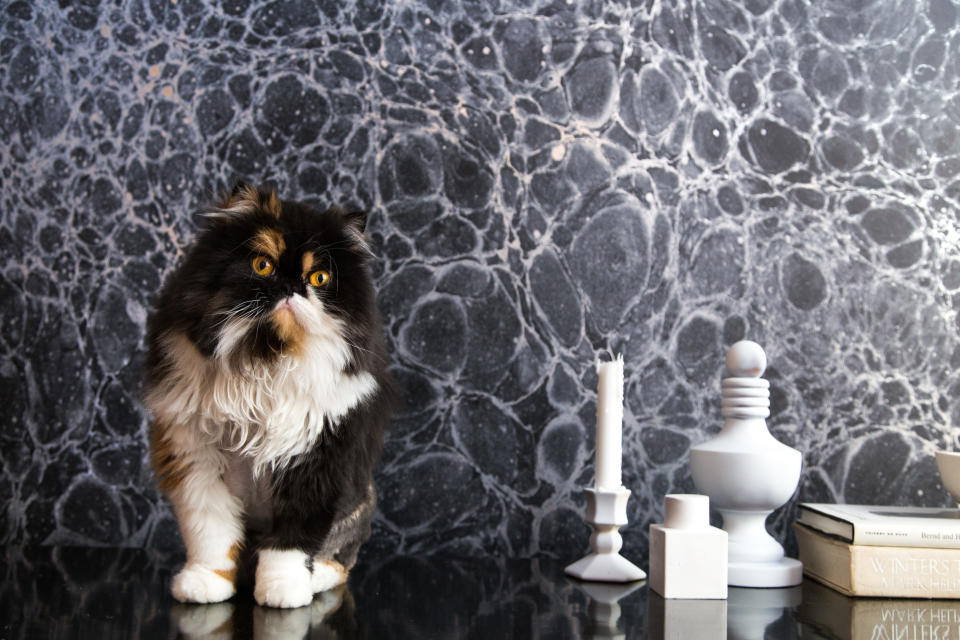
“I think it would be a very seamless process,” Rachel says. “I’ve been doing sketches and working on rug designs. They’re like large scale paintings. The possibilities are endless, the dimensionality, different shapes and heights of tufting. There’s so much sophistication now, you can achieve so much detail. I would love to do rugs, it’s just a matter of timing and finding the right partners.”
Perhaps Calico’s rugs will become the new therapy couch?
